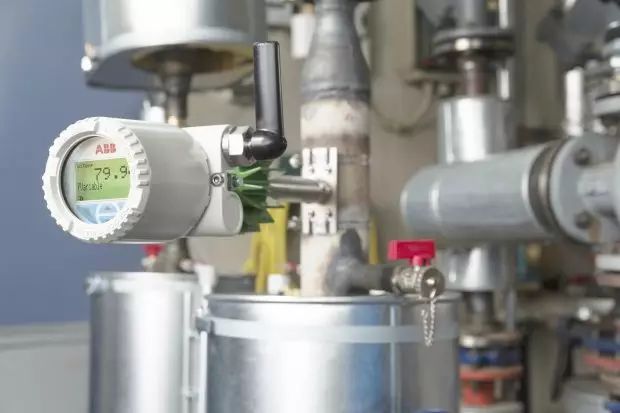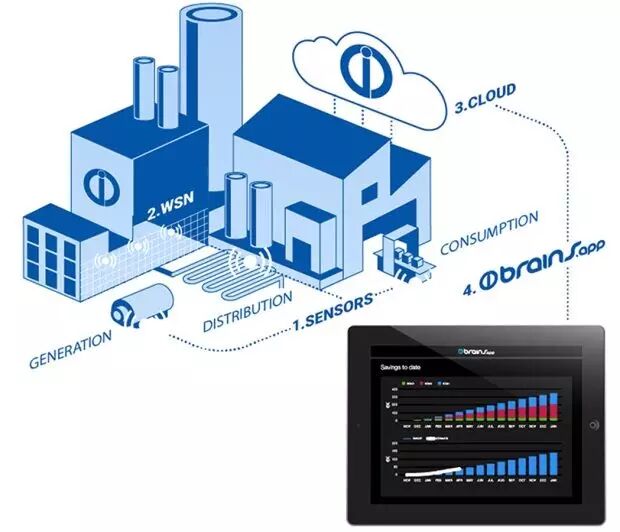Low-power processors, intelligent wireless networks, low-power sensors, and “big data” analytics have significantly increased interest in the Industrial Internet of Things (IIoT). In short, the combination of these technologies enables the placement of numerous sensors anywhere: not only where communication and power infrastructure exists but also in any location where valuable information needs to be collected regarding the behavior of “objects”, their locations, or their identities. Equipping “objects” such as machines, pumps, pipelines, and train cars with sensors is not a new practice in the industry. From refineries to production lines, custom sensors and networks are already prevalent in various industrial environments. In the past, such Operational Technology (OT) systems operated as standalone networks, maintaining high standards of network reliability and security that consumer technologies could not meet. Filtering available technologies according to these high standards ultimately leaves only those most suitable for critical business-oriented IIoT applications. In particular, the way these sensors connect determines whether they can be deployed safely and cost-effectively in the typical harsh environments of industrial applications. This article explores some of the key requirements that make industrial wireless sensor networks (WSNs) unique.
Reliability and Security are Paramount
For consumer applications, cost is often the most important system attribute; in contrast, industrial applications generally prioritize reliability and security. According to a survey by OnWorld of global industrial WSN users, reliability and security are the two most critical issues they mention (see Reference 1). The profitability of a company, the quality and efficiency of the goods produced by workers, and the safety of workers often depend on these networks, which is why the survey results are not surprising. This is why reliability and security are essential for industrial wireless sensor networks.
A common principle for enhancing network reliability is to use redundancy. With redundancy, the system can recover from potential failure mechanisms without data loss. In wireless sensor networks, there are two basic opportunities to utilize redundancy. The first is the concept of spatial redundancy, where each wireless node can communicate with at least two other nodes, and the routing mechanism allows data to be forwarded to either of the two nodes while still reaching the intended final destination. In a mesh network, each node can communicate with two or more neighboring nodes. A properly configured mesh network is more reliable than a point-to-point network because, in such a mesh network, if the first path is unavailable, data is automatically sent over another path. The second redundancy can be achieved by utilizing multiple available channels in the RF spectrum. The concept of channel hopping means that paired nodes can use different channels each time they transmit data, so any given channel experiencing temporary issues in a harsh RF environment will not affect data transmission. The harsh RF environment is typical for industrial applications. In the IEEE 802.15.4 2.4GHz standard, there are 15 extended frequency channels available for hopping, providing the channel hopping system with much greater resilience than non-hopping (single-channel) systems. Several wireless mesh network standards employ both spatial redundancy and channel redundancy; these standards are known as Time-Slotted Channel Hopping (TSCH), including IEC62591 (WirelessHART) and the upcoming IETF 6TiSCH standard (see Reference 2). These mesh network standards utilize wireless frequencies in the globally available unlicensed 2.4GHz spectrum and have evolved from the work done by Linear Technology’s Dust Networks, which first applied the TSCH protocol to low-power, resource-constrained devices starting with the SmartMesh product in 2002.
Although TSCH is an essential component for achieving data reliability in harsh RF environments, the way mesh networks are established and maintained is also critical for achieving years of continuous, fault-free operation. Industrial wireless networks often need to operate for many years and will face various RF challenges and data transmission requirements throughout their lifetime. Therefore, the final element required to achieve reliability comparable to wired networks is intelligent network management software, which dynamically optimizes network topology and continuously monitors link quality to maximize throughput in the presence of interference and changes in the RF environment.
Security is another key attribute of industrial wireless sensor networks. The primary goals of implementing security in WSNs are:
Confidentiality – Data transmitted over the network cannot be read by anyone other than the intended recipient.
Integrity – Any information received is verified to be exactly what was sent, with no additions, deletions, or modifications to the content.
Authenticity – Information claimed to come from a given source actually does come from that source. If time is used as part of the verification method, authenticity can also protect information from being recorded and replayed.
Key security technologies that must be incorporated into WSNs to achieve the above goals include: strong encryption algorithms (e.g., AES128) and robust key and key management, cryptographic random number generators to prevent replay attacks, message integrity checks (MIC) for each piece of information, and access control lists (ACL) that explicitly allow or deny access to specific devices. These latest wireless security technologies can be easily integrated into many existing devices used in WSNs, but not all WSN products and protocols incorporate all security technologies (see Reference 3). Note that the connection of secure WSNs to insecure gateways is another vulnerability that must be considered in system design for end-to-end security.
Industrial IoT is Not Installed by Wireless Experts
Mature industries often add IIoT products and services on top of traditional products, and the deployment environments of these industries’ customers include both old and new equipment. The intelligence in industrial WSNs must manifest in making IIoT products user-friendly, allowing existing field personnel to transition seamlessly to new IIoT products. The network should self-form quickly so that installers can leave a stable operating network at the site; it should avoid service interruptions through self-healing when connections are weak or absent; and when service does interrupt, it should provide self-reporting and diagnostics. After general deployment, minimal or no maintenance should be required to avoid high costs associated with on-site maintenance. For many applications, success partly depends on the ability to deploy in hard-to-reach or very hazardous areas, so IoT devices must operate on batteries, typically for over five years.
Additionally, since the industrial IoT widely adopted by end-users often spans the entire company, the system should be suitable for global deployment and achieve multi-site standardization. Fortunately, international industry wireless standards that understand and meet this requirement are already in place, including IEEE 802.15.4e TSCH.
Sensors are Everywhere
For industrial IoT applications, the accurate placement of sensors or control points is crucial. The promise of wireless technology is communication without wiring; however, if wireless nodes require power every few hours or months through plugging into a power outlet or recharging, the deployment costs become prohibitive and impractical. For example, adding sensors to rotating equipment to monitor its operational status cannot use wired connections, but the information gained from monitoring the running equipment allows customers to maintain critical equipment predictively, avoiding unwanted and costly downtime.
To ensure flexible and cost-effective deployment, each node in an industrial WSN should be able to operate on batteries for at least five years, providing users with maximum flexibility and expanding the coverage of industrial IoT applications. As an example of an industrial TSCH WSN, Linear Technology’s SmartMesh products typically operate at currents far below 50μA, allowing them to run for many years on two AA batteries. If the surrounding environment has abundant energy to harvest, wireless nodes can also operate continuously through energy harvesting (see Figure 1).
 Figure 1: Sensors are Everywhere. Low-power wireless sensor nodes powered continuously by harvested energy, such as this wireless temperature sensor from ABB that collects heat, can be placed in optimal locations to gather more industrial environmental data.
Figure 1: Sensors are Everywhere. Low-power wireless sensor nodes powered continuously by harvested energy, such as this wireless temperature sensor from ABB that collects heat, can be placed in optimal locations to gather more industrial environmental data.
Timing is Critical
Industrial monitoring and control networks are critical business systems. These networks underpin systems that affect the basic costs of goods production, and the timeliness of their data is crucial. Over the past decade, deterministic TSCH WSN systems have been field-tested in various monitoring and control applications. Such time-slot systems (e.g., WirelessHART) timestamp their data transmissions and impose time constraints. In these networks, nodes that require more data transmission opportunities are automatically configured with more time slots, and by configuring multiple time slots across successive paths in the network, low-latency transmission can be achieved. This data transmission coordination capability also greatly enhances the deployment capability of networks with frequent, dense data transmissions. Without a schedule, the flood of unordered wireless traffic would cause non-TSCH wireless networks to collapse.
Moreover, each data packet in a TSCH network contains accurate timestamp information indicating when the packet was sent, and each node can obtain a unified time across the entire network to coordinate control signals across WSN nodes when needed. By providing timestamp data, even if data is not received in order, it can still be correctly sorted, which is very helpful in diagnosing exact causes and impacts in industrial applications that must coordinate information from multiple sensors.
Network Visibility is Key
Industrial networks are required to operate continuously for many years; however, no matter how robust a network is, problems can still occur. Even if a network operates well at installation, its quality may be affected by various environmental factors over its operational lifetime. It is crucial for any industrial network to issue appropriate alerts in advance for such issues, and the ability to quickly diagnose and resolve problems is also key to high-quality service. When it comes to providing visibility into network management metrics, not all wireless sensor networks should be treated equally. However, at a minimum, the management system for industrial wireless networks should provide visibility into the following aspects:
● Wireless link quality measured by Received Signal Strength Indicator (RSSI)
● End-to-end packet delivery success rate
● Mesh quality, highlighting nodes without sufficient backup paths to maintain network reliability
● Node status and battery life (where applicable)
In the best industrial application deployments using intelligent networks, the method for fixing such issues is to automatically resend data over replacement paths while continuously updating the network topology to maximize connectivity (see Figure 2).
 Figure 2: Network Visibility. Network management software provides critical visibility into the health of wireless networks, such as this SNAP-ON utility tool from Emerson Process Management.
Figure 2: Network Visibility. Network management software provides critical visibility into the health of wireless networks, such as this SNAP-ON utility tool from Emerson Process Management.
Intelligent “Objects” Should Have Intelligent Networks
There is considerable interest in enhancing the intelligence of “objects”; however, in industrial IoT applications, this is not the only domain of “intelligence”. Industrial IoT networks should leverage both intelligent endpoint nodes and the best network and security management capabilities that enterprise IT and operational technology departments must provide. The network should be highly configurable to meet specific application needs. For example, to meet low-power requirements for extended battery life, it should have the capability to self-assess the available power in the network and employ intelligent routing to optimize overall network power consumption. Additionally, the network should automatically adapt to changes in the RF environment, and when such changes occur, the ability to dynamically alter the topology can be beneficial. Linear Technology’s SmartMesh Network Manager not only implements network security, management, and routing optimization but also allows users to remotely reset nodes over the air when needed, providing a pathway for functional upgrades to adapt to future customer needs.
Conclusion
The Internet of Things is largely an industrial phenomenon, driven by clear business motivations and compelling returns on investment. In critical business applications, industrial wireless sensor networks must meet high standards of intelligence and security and operate reliably for many years without wires. Existing and emerging wireless mesh network standards can meet these stringent requirements, and these standards will become essential components of the industrial IoT, helping industrial customers achieve business and service transformations in the era of the IIoT (see Figure 3).
 Figure 3: Driving Change – Software analytics (e.g., IntelliSense.io’s Brains.App software) leverage data from industrial wireless sensor networks to simplify factory operations, optimize yield, and enhance safety.
Figure 3: Driving Change – Software analytics (e.g., IntelliSense.io’s Brains.App software) leverage data from industrial wireless sensor networks to simplify factory operations, optimize yield, and enhance safety.